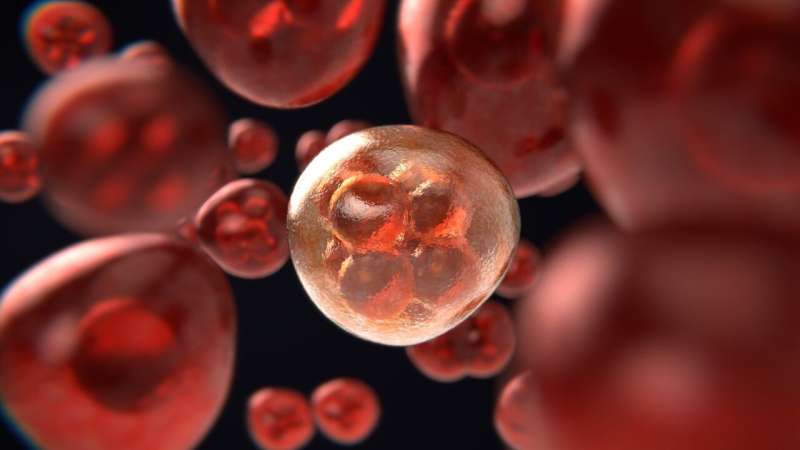
An international team of scientists has discovered a molecule that prevents tumor cells spreading from a primary cancer site to colonize other sites in the body.
The multidisciplinary research team, from the University of York, Leiden University and Technion (Israel Institute of Technology), urso americano atleta nome discovered that the small, sugar-like molecule maintains the integrity of tissue around a tumor during cancer. They have shown the sugar-like molecules markedly reduce cancer spread in mice, paving the way for development towards clinical application.
How cancer cells invade
Metastasis, the spread of cancer cells to distant sites in the body, is what makes cancer so lethal. Metastasis formation depends on the ability of cancer cells to detach from the primary tumor site and invade through blood vessel walls and tissue barriers to reach secondary sites of growth. This metastatic invasion process requires biological molecules called enzymes, which digest proteins and sugars in the space around cells, enabling cancer cells to pass through the subsequent gaps.
One abundant class of sugar that surrounds cells is the heparan sulfates, which are long, chain-like molecules that help stabilize the integrity of the extracellular space. Heparan sulfate sugars are digested by an enzyme called heparanase, which acts to chop up the “chains” and thereby weaken the space around cells.
Identifying the target
Metastatic cancer cells produce large amounts of heparanase enzyme, which helps them to spread around the body. Inhibiting heparanase is therefore a major target for anti-cancer therapy.
The researchers developed and tested a new sugar-like molecular that reacts with the enzyme heparanase, whose 3D structure was first solved by the York group. Once the new molecule is bound, the heparanase enzyme is unable to bind or cut heparin sugar chains around cells. In this way, the tissue around cells remains firm and inaccessible to dislodged cells.
At York, Professor Gideon Davies and Dr. Liang Wu from the Department of Chemistry showed how the enzyme inhibitor inhibits heparanase. The research team is now looking at how the molecule can be further improved.
How the research has evolved
Professor Davies said, “It has been brilliant to see the work develop from fundamental studies of enzyme structure and function and evolve into small molecules with potent anti-cancer activities. It is really exciting.”
Researchers at Technion studied the new molecule in mouse models of lung cancer, breast cancer and blood cancer. While it is still too early to determine whether the new molecule will reach clinical application, the results are promising and the institutes involved have already applied for a patent on the molecule.
Lead author of the study Professor Hermen Overkleeft, from Leiden University, said, “Now we have to find out whether the compound is stable, safe for the human body, ends up in the right place in sufficient quantities, and so on. That takes a couple of years; it may come to nothing and someone has to be willing to take that financial risk.
Source: Read Full Article
